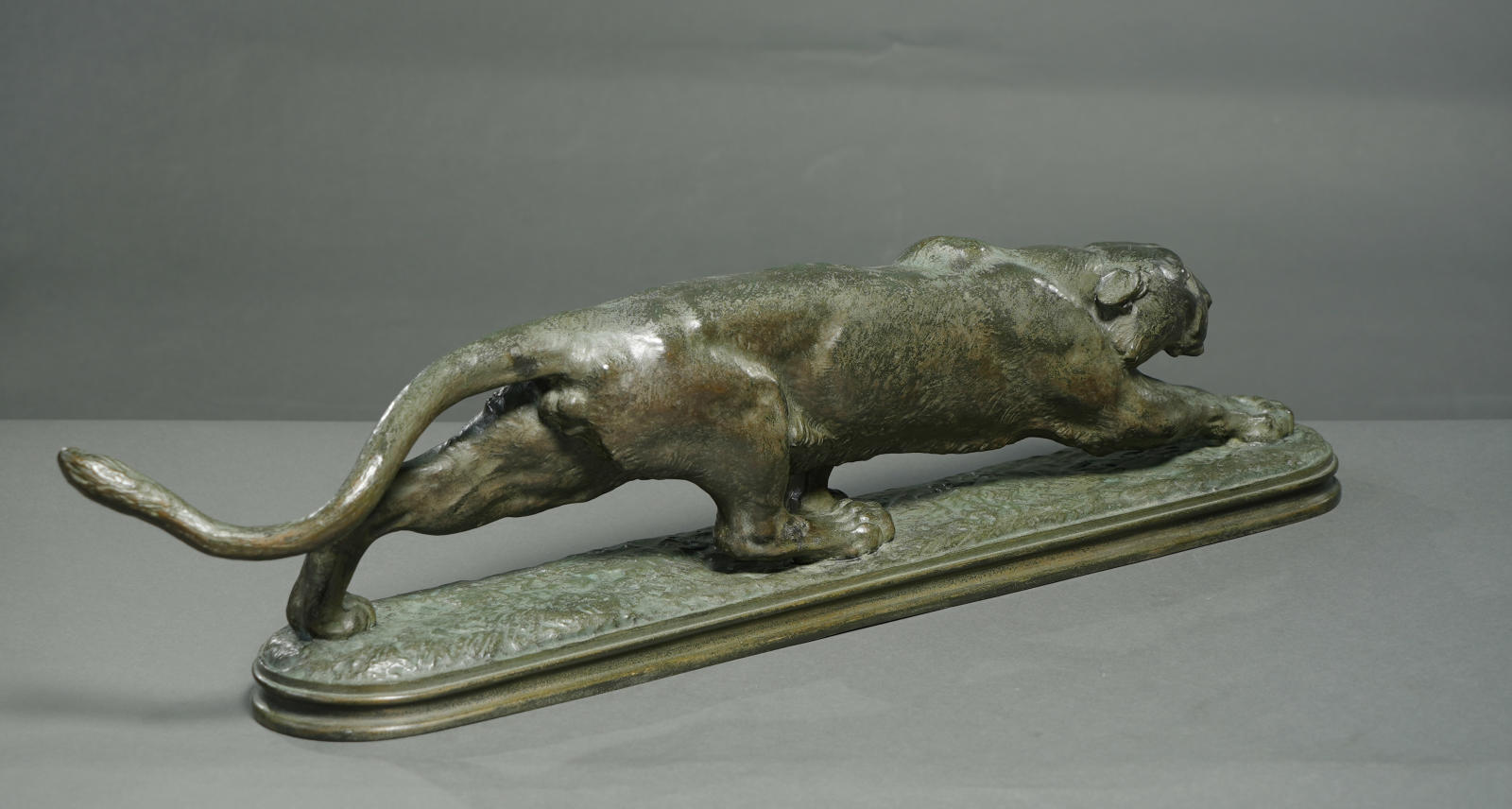











Marked: J.W. (under [presumably Jno WIlliams Foundry, NY])
artist
Proctor was one of the foremost American sculptors of the late 19th and early 20th centuries, best known for his monumental bronzes depicting frontier life, wildlife, and heroic figures of the American West. Born in Ontario, Canada, and raised in Colorado, he grew up amid the dramatic landscapes and rugged life of the western frontier, experiences that would profoundly shape his artistic sensibility.
Trained initially as a painter at the National Academy of Design in New York, Proctor soon turned to sculpture, drawn to its physicality and expressive potential. He studied at the École des Beaux-Arts in Paris, where he refined his classical technique while maintaining a deep connection to the American subject matter that defined his work. A passionate outdoorsman and skilled hunter, Proctor often studied animals directly in the wild, developing a rare anatomical accuracy and a deep sensitivity to their spirit and movement.
Proctor’s career flourished with public commissions across the United States, including equestrian statues of Theodore Roosevelt and frontier figures such as Kit Carson and General William Jackson Palmer. His work was prominently featured at the 1893 World's Columbian Exposition in Chicago, which helped establish his national reputation. He was part of a generation of American sculptors who blended Beaux-Arts training with a distinctly nationalistic vision, memorializing both the mythic and historical West.
Description
The history behind this sculpture is legendary. Proctor was a rare individual who viewed life as work and work as play. To him, hunting and sculpting were indelibly intertwined. Proctor grew up hunting in the mountains of Colorado - he was a genuine Westerner whose love of the American wilderness shaped his world view. During one of his hunting trips in the Flat Tops of the Colorado Rockies in the summer of 1887 he shot and killed at least a couple of bears, numerous deer and elk, and an adult panther. The lion was perhaps his favorite trophy. He sketched it, skinned it, and then had the pelt packed up to take back to his studio at the Art Students League in New York where he continued to study the live cats at the Central Park Menagerie
When, in 1891, Proctor received an invitation to model monumental plaster sculptures of western animals as decorations for the grounds of the World’s Columbian Exposition, one of the subjects he chose was his western mountain lion. During the fair, the great Polish pianist Ignace Jan Paderewski paid a visit to Alexander Phimister Proctor’s studio on the site of the World’s Columbian Exposition in Chicago, where Proctor was working on life-sized wild animal sculptures. The pianist admired Proctor’s Stalking Panther and Fawn bronzes commenting that he couldn’t understand how the same man could model so fierce a beast as a panther and such a delicate, timid fawn. Always the charmer, Proctor countered by wondering how Paderewski could play a crashing thunderstorm and then a dainty sonata to a water lily. Paderewski replied, “I interpret; you create.”
In 1894, Proctor went to Paris and brought along a plaster cast of "Stalking Panther" in order to continue refining the composition. Using a shaved cat for anatomical reference, he completed the second version and had it cast in bronze. The work is more than an anatomical assessment of an elongated cat in mid-stride; the piece is a psychologically engaging study of predatory motion toward an unseen prey, reflecting the artist's interest in depicting animals as forces of uncivilized nature.provenance
Collection of Joanne B. Breyer until 2025
Doyle NY May 2025











